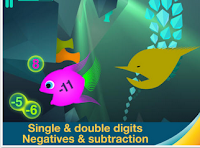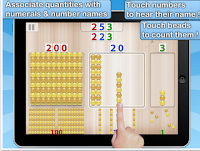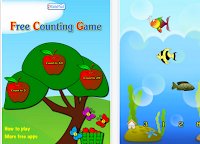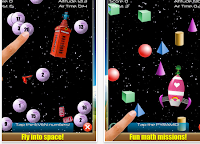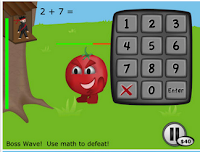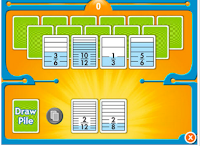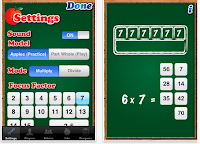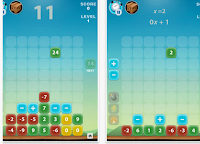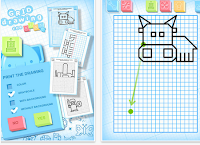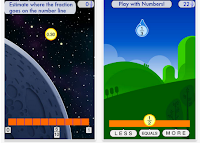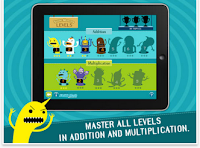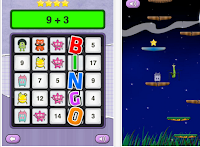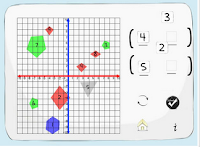10 technology hallmarks for every campus
http://www.ecampusnews.com/technologies/technology-hallmarks-campus-099
1. High-speed wireless broadband.
According to the Center for Digital Education’s recent “2013 Yearbook: Technology Innovation in Education,” over 80 percent of education institutions surveyed said that wireless broadband was their “top priority for IT investment.”
2. 24/7 IT support.
We have 24/7 support for emergencies and much of our staff, just like at a hospital, are on call. That’s not a perk for the campus, it’s a necessity.
3. The cloud.
The cloud can also: acquire and implement the latest software and application updates; streamline enrollment and admissions processes; and turn to subscriptions that are scalable and provide options, says Edudemic.
4. Digital textbooks.
Planning for digital textbooks means not only boosting mobile device capabilities on campus, but helping faculty learn to implement digital resources into their course.
5. 21st Century PD for faculty and admin.
From offering a MOOC on classroom management online solutions, to hosting a PD session on Twitter, campus admin should offer multiple options for PD delivery, just like how faculty should offer students multiple options for learning–there’s no better way to teach something than to model it first!
6. MOOCs.
[Read: “3 pros and 3 cons of MOOCs.”]
7. Online course management system.
From sending in-class emails to checking grades, course management systems, like Blackboard, offer faculty and students a fairly intuitive way to manage courses more efficiently.
8. Big Data…
Future-proofing universities are beginning to deploy storage solutions to help manage the unstructured data in physical, virtual and cloud environments. More modern storage solutions are also open source for a high learning curve but low cost.
9…security.
precautions can range from scanning existing databases on the university’s servers to determine where personal information is located and then, depending on the database, destroy the personal information or add more digital security; as well as put cybersecurity systems through a series of penetration tests to highlight security shortcomings.
[Read: “University data breach prompts ‘top-to-bottom’ IT review.”]
10. Social media done well.
of the major ways campuses use social media well is by serving up both “cake” and “broccoli,” or balancing the content that is important and good for the school (broccoli) and the content that is fun and delicious (cake). “If you share enough cake, your audience will consume the occasional broccoli,” she advises.
24 Good iPad Math Apps for Elementary Students
http://www.educatorstechnology.com/2013/12/24-good-ipad-math-apps-for-elementary.html
1- Motion Math
Feed your fish and play with numbers! Practice mental addition and subtraction with Motion Math: Hungry Fish, a delightful learning game that’s fun for children and grownups.
2- Geoboard
The Geoboard is a tool for exploring a variety of mathematical topics introduced in the elementary and middle grades. Learners stretch bands around pegs to form line segments and polygons and make discoveries about perimeter, area, angles, congruence, fractions, and more.
3- Math Vs Zombies
The world is overrun with zombies. You are a part of a squad of highly trained scientists who can save us. Using your math skills and special powers you can treat infected zombies to contain the threat.
4- Mystery Math Town
It’s part math drills, part seek and find game and totally engaging. Kids ages five and up should find this both fun and challenging. Parents should rejoice that finally there is a way to get kids to want to do more math. – Smart Apps for Kids
5- Montessori Numbers
Montessori Numbers offers a sequence of guided activities that gradually help children reinforce their skills. Each activity offers several levels of increasing complexity
6- Free Kids Counting Game
FREE and fun picture math games for kids designed by the iKidsPad team. This free iPad math app dynamically generates thousand of beginning counting games with different themes and number levels. Great interactive and challenging games helps young children build up basic counting skills and number recognition.
7- Math Puppy
Math Puppy will take you on a journey of educational fun like never before!
From toddlers to grade school, for Children of all ages – Math Puppy is the perfect way to build up your math skills. Your child will be able to enjoy a constructive, supportive, interactive fun filled environment while mastering the arts of basic math.
8- Mathmateer
While your rocket is floating weightlessly in space, the real fun begins! Play one of the many fun math missions. Each mission has touchable objects floating in space, including stars, coins, 3D shapes and more! Earn a bronze, silver or gold medal and also try to beat your high score. Missions range in difficulty from even/odd numbers all the way to square roots, so kids and their parents will enjoy hours of fun while learning math.
9- Math Ninja
Use your math skills to defend your treehouse against a hungry tomato and his robotic army in this fun action packed game! Choose between ninja stars, smoke bombs, or ninja magic – and choose your upgrades wisely!
10- Everyday Mathematics
The Equivalent Fractions game by McGraw Hill offers a quick and easy way to practice and reinforce fraction concepts and relationships. This game runs on the iPad, iPhone, and iPod Touch.
11- Elementary School Math
Based on the classroom hit Middle School Math HD, Elementary School Math HD is a stunningly beautiful and powerfully engaging application built for today’s technology-driven elementary school classroom. Emphasizing game-playing and skill development, the eight modules in Elementary School Math HD have been carefully designed by classroom teachers to provide the perfect balance between fun and the practice of fundamental skills
12- Math Tappers
MathTappers: Multiples is a simple game designed first to help learners to make sense of multiplication and division with whole numbers, and then to support them in developing fluency while maintaining
accuracy.
13- Ordered Fractions
Two Player Bluetooth Math Game! You can use two devices and play competitively or cooperatively with your classmates or parents. Ordered Fractions provides a comprehensive tool that offers an innovative method of learning about comparing and ordering fractions.
14- SlateMath
SlateMath is an iPad app that develops mathematical intuition and skills through playful interaction. The app’s 38 activities prepare children for kindergarten and first grade math. SlateMath forms the foundation of numbers, digit writing, counting, addition, order relation, patterns, parity and problem solving.
15- NumberStax
Number Stax is a puzzle game to test your number skills! Drop numbers and operators in the correct places to match the number or expression shown at the top of the screen to score. You can’t remove tiles but you can swap them around. You can freeze the game at any time, but remember to watch the clock! Eliminate tiles, score points, and earn bonuses and achievements for as long as possible until your grid is full! Remember, the longer you play the faster it gets. Share with your family and friends to see who can get the highest score.
16- Grid Drawing
With a sheet of paper, a grid and a template, your children will be able to draw 32 drawings on iPad, 16 on the iPhone in the Lite version, more than 120 (60 on iPhone) in the full version.
17- Motion Math
Developed at the Stanford School of Education, Motion Math HD follows a star that has fallen from space, and must bound back up, up, up to its home in the stars. Moving fractions to their correct place on the number line is the only way to return. By playing Motion Math, learners improve their ability to perceive and estimate fractions in multiple forms.
18- 5th Grade Math
Splash Math is a fun and innovative way to practice math. With 9 chapters covering an endless supply of problems, it is by far the most comprehensive math workbook in the app store.
19- Sushi Monster
Meet Sushi Monster! Scholastic’s new game to practice, reinforce, and extend math fact fluency is completely engaging and appropriately challenging.
20- Math Monsters
Math Monsters Bingo is a new, fun way to master math on your iPhone, iPad and iPod touch. The game lets you practice math anytime and anywhere using a fun Bingo styled game play.
21- Grid Lines
Grid Lines is a Battleship-style math game used to teach students the coordinate plane by plotting points in all four quadrants.
22- Marble Math
http://podnetwork.org/event/pod-2013/
Conference program available in PDF and upub format, so I can have it on my laptop and on my mobile device: diminishes the necessity to carry and pull constantly a paper stack.
it is the only conference I know with 6AM yoga. Strong spirit in a strong body. LRS & CETL must find space and instructors an offer mediation + yoga opportunity for SCSU students to disconnect
1:00 – 5:00 PM excursion to Carnegie Mellon – Learning Spaces. LRS interest in Learning Commons.
From the pre-conference workshops, Thurs, Nov 7, 8:30AM – 12:00PM:
Linda Shadiow, Connecting Reflection and Growth: Engaging Faculty Stories.
This workshop seems attractive to me, since it coincides with my firm conviction that SCSU faculty must share “best practices” as part of the effort to engage them into learning new technologies.
Kenyon, Kimberly et al, Risky Business: Strategic Planning and Your Center.
This workshop might be attractive for Lalita and Mark Vargas, since strategic planning is considered right now at LRS and CETL might also benefit from such ideas.
roundtables, Thurs, Nov. 7, 1:30-2:45PM
Measuring the Promise in Learner-Centered Syllabi
Michael Palmer, Laura Alexander, Dorothe Bach, and Adriana Streifer, University of Virginia
Effective Faculty Practices: Student-Centered Pedagogy and Learning Outcomes
Laura Palucki Blake, UCLA
Laura is the assistant director http://gseis.ucla.edu/people/paluckiblake
3 time survey of freshmen. survey also faculty every 3 years. can link this date: faculty practices and student learning
triangulating research findings. student-centered pedagogy. which teaching practices are effective in promoting student-center learning practices.
no statistical differences in terms of student learning outcomes between part-time and full-time faculty. The literature says otherwise, but Laura did not find any statistical difference.
http://ow.ly/i/3EL77
discussions is big, small group work is big with faculty
in terms of discussions, there is huge difference between doing discussion and doing it well.
this is a self-report data, so it can be biased
there are gender differences. women more likely to use class discussions, cooperative learning same, students presentations same. gender discipline holds the gender differences. same also in STEM fields.
students evaluations of each other work. cooperative learning: it is closer gender-wise.
the more student-centered pedagogy, the less disengagement from school work.
understand on a national level what students are exposed to.
lpblake@hmc.edu
http://www.heri.ucla.edu/
wabash national data.
ePublishing: Emerging Scholarship and the Changing Role of CTLs
Laura Cruz, Andrew Adams, and Robert Crow, Western Carolina University
LORs are in Kentucky.
CETL does at least Professional Development, Resources, Eportfolios, LORSs. FLCs
Teaching Times at Penn.
model 2: around instructional technology. More and more CETL into a combined comprehensive center. about 9 are paid by IT and 11 by academic center. because of finances cuts this is the model predicted from the 90s. Why not IT? because ater they say how to use it. and how to use it effective. think outside of technology, technogogy is not the same as technology. Teacher-scholar model: research, service, teaching.
http://ow.ly/i/3EMJl
egallery and other electronic ways to recognize productivity. Stats and survey software does NOT reside with grad studies, but with CETL, so CETL can help faculty from a glimmer of an idea to presentation and publication. Research Support Specialist.
how and where it fits into faculty development. Neutrality. Should CETL be advocates for institutional, organizational change. Do CETL encourage faculty to take innovation and risk (change the culture of higher ed). Tenure and promotion: do we advocate that epub should count, e.g. a blog will count toward tenure.
a national publication: http://www.sparc.arl.org/resources/authors/addendum
we domenstrate that it is good school. scholarship of teaching will be good teaching.
OER? Open educational resources. SHould CETL host and participate in those? Do we participate in creating resources, which are designed to replace texbooks? Caroline has a state-wide grant to support faculty developing learning resources.
open access is controversial. the right to publish and republish. http://www.sparc.arl.org/
40% of all scholarly articles are owned by 3 publishers
Academic Social Media academic.edu and electronic journals.
CETL is the comprehensive center, the hub where people go to, so CETL can direct them to and or get together stakeholder to make things happen.
the lesson from this session for me is that Lalita and Keith Ewing must work much closer.
Evaluating the quality of MOOCs: Is there room for improvement?
Erping Zhu, University of Michigan; Danilo Baylen, University of West Georgia
reflection on “taking” a MOOC and the seven principles. how to design and teach MOOC using the seven principles.
MOOC has a lot of issues; this is not the focus, focus is on the instructional design. Both presenters are instructional designers. Danilo is taking MOOC in library and information science.
Second principle: what is a good graduate education.
about half had completed a course. Atter the 3rd week the motivation is dissipating.
Erping’s experience: Provost makes quick decision. The CETL was charged with MOOC at U of Michigan. Securing Digital Democracy. http://www.mooc-list.com/university-entity/university-michigan
Danilo is a librarian. his MOOC class had a blog, gets a certificate at the end. Different from online class is the badges system to get you involved in the courses. the MOOC instructors also had involved grad students to monitor the others. the production team is not usually as transparent as at Corsera. Sustainability. 10 week module, need to do reflections, feedback from peers. 7 assignments are too much for a full-time professional.
http://www.amazon.com/Library-2-0-Guide-Participatory-Service/dp/1573872970
http://tametheweb.com/category/hyperlibmooc/
http://tametheweb.com/2013/10/20/hyperlibmooc-library-2-013-presentation-links/
1. principle: contact btw faculty and student. Not in a MOOC. video is the only source provides sense of connection. the casual comments the instructor makes addressing the students provides this sense. Quick response. Collaboration and cooperation in MOOC environment and bring it in a F2F and campus teaching. Feedback for quizzes was not helpful to improve, since it i automated. students at the discussion board were the one who helped. from an instructional design point of view, how MOOC design can be improved.
group exercise, we were split in groups and rotated sheet among each other to log in response to 7 sheets of paper. then each group had to choose the best of the logged responses. the responses will be on the POD site.
eri week resources
Per Keith’s request
“Why Students Avoid Risking Engagement with Innovative Instructional Methods
Donna Ellis, University of Waterloo”
Excerpt From: Professional and Organizational Development Network in Higher Education. “POD Network 2013 Conference Program, Pittsburgh PA 11/7 to 11/10.” iBooks.
This material may be protected by copyright.
A quantitative study. The difficulty of group works. Various questions from the audience, the time of class (early Mrng) is it a reason to increase the students disengagement. Students pereceptions .
The teacher did. It explain why the research and this might have increased the negative perception. Summary of key barrierS.
Risk of negative consequneces
preceived lack of control
contravention of perceived norms.
fishbein and Aizen 2010
discussoon . How faculty can design and deliver the course to minimize the barriers. Our table thought that there are a lot of unknown parameters to decide and it is good to hear the instructor nit only the researcher. How to deal with dysfunctional group members behaviors. Reflections from the faculty member how to response to the data? Some of the barriers frustrated him. Outlines for the assignments only part of the things he had done to mitigate. What are we asking students on course evaluations. Since a lot more then only negative feedback. Instructor needes more training in conflict resolution and how to run group work.
http://ow.ly/i/3Fjqt
http://ow.ly/i/3Fjpq
CRLT Players
Friday, Nov 8, 10:30 AM – 12:00 PM
William Penn Ballroom
7 into 15
CRLT Players, University of Michigan”
Excerpt From: Professional and Organizational Development Network in Higher Education. “POD Network 2013 Conference Program, Pittsburgh PA 11/7 to 11/10.” iBooks.
This material may be protected by copyright.
It is a burlesque and theater approach to engage students and faculty into a conversation. 10 plays in 30 min.
Discuses different topics from the plays and seek solutions as a team. How to deal with international students ( Harvard lady said ” safe places” for students) how to deal with technology or the lack of it, missed next one writing this notes and how to reward faculty in innvative things. T. Encoruage innovation, they received a letter from the provost and if they fail, it is not used in their annual evaluation
No videotaping of this performance because the power is in conversation. Is there a franchise, like training people to do that. NSF grant was allowing them but now just pick up the idea. Sell scripts? Can have conversations about strategies how to collaborate with the theater department where to start these short vinniets. If come to campus and bring performance do they do also the follow up.
Is anger or hostility a reaction during after these presentations. How to handle it. Hostility can be productive and make sure that it is told that it is productive. Getting difficult things out there is what the theater is trying to do in a distant way. This is not a morality
how develop the work? How come up with issues. Faculty bring issues, followed by interviews, draft created we heater identifies the problem and address the issue. Preview performances with stakeholders who confirm . There are more then. Sufficient ideas, so the organizers can choose what they see most pertinent
ecrc committee went to their meeting instead of lunch to see if I can particpirate for next year activitities. Ecrc is the acronym for the tech committee. Web site is one takes of this committee. Word press site , how the groups work, how forms work, how to connect with people and most importantly how to start communicating through the web site and cut the listserv. An attempt to centralized all info in the website rather then scattered across universities.
what is BRL? Google apps and Wikipedia as a wiki for another year until figure out if it can be incorporated in the web site. Reconceptualize how do work in the process. To groups in ecrc. Wikpaidea and web page. And then social media with Amy? Ecrc liaison in every POD committee to understand how to set up the committee web presence. Blackboard collaborate to do meetings and this is what liason explain to committee members. Tinyurl.com/ECRC2013
Designing Online Discussions For Student Engagement And Deep Learning
Friday, Nov 8, 2:15 PM – 3:30 PM, Roundtable
Parkview East
Danilo M Baylen, University of West Georgia”
pit must be asynchronous discussion
What is the purpose and format of the discussion. Assessment. How the online discussion is supporting the purpose of the curriculum to the students learning
About five discussions per semester all together. Behaved part of the class culture
Format of the assignment
asynchronous discussion list. Series of questions or a case study. Is the format a sequence of responses or invite a discussions
checklist which stifles a creative discussion or just let it more free
purpose – must be part of the syllabus and it must be clear.
Meeting learning objectives.
duration
interactivity – response to other students. List of 6 different options how they can reply. what format the interactivity takes Is important issue, which has no textbook
assessment- initial posting are critical, since it gives and idea what to work on. How much points as part of the bigger picture. Yet it is the ground work for the assignment, which gets most points.
metacognitive not evaluative , give students examples from the pro regions class what a good discussion is And explain students how to. Evaluate a good discussion entry
how the question is worded and use the threaded discussion for them to reflect how they think, rather then only assess if they read the chapter. The research about online discussion is very different.
What is the baseline.
Online course must must be set up ready before semester starts or not?
reflection for the end of the semester
SteVn brookfields critical questionaire
meet thISTI and qr standards
is reflection on the content or the process
students reflect on their own reflections
what have you learned about yourself as online learner and look for consistencies for both negative and positive reflections
Assess critical thinking
there is a workshop by the presenters instituitions how to organize
more claims then actual evidence so Data is sought to
main issues
programmatic emportfolio. Not student presentation portfolios, but academic portfolio
e portfolio forum
look at image of the green copy:
1. Integration and reflection
2. Social media – in community with other students , faculty, organizations
3. Resume builder
eportfolio is. Prt of the assessment. Conversation on campus. Some depts use exportfolio extensively but not happy. Programmatic academic e portfolio to collect data
use Sakai open portfolio system
12 drepartments and six more second year. to speak the same language, they developed a guideline, conceptual framework ( see snapshot of handout)
Curriculum mapping ( see the grid on the. Handout) took much longer then expected.
the role of CETL. The provost at Kevin’s institution charged CETL to do the portfolio gig.
The big argument of the CETL redirector with the provost is that portfolio not only to collect data for assessment and accreditation but to provide meaningful experience for the students. EDUCAUSE report horizon, learning analytics Scandalous headlines of students suing law schools. bad deductions made on big data. The things that matte for students must be in the portfolio and they get used to use the portfolio. Pre reflection entries by the students, which shorted the advising sessions. The advisor can see ahead of time. The advisers. Will. B the. Focus point, The. Advising portfolio Is becoming
portfolio must be used by faculty not only students.
Whats the by in for students. Presentations portfolio part of. Marketing purposes. Google sites so when students leave the institutions students can ” take” the portfolio with them as we’ll go multimedia. attempts failed because platforms which can be cutozmized we’re not used Digital identity As CETL director not technology expect and how to learn from the faculty and that was very
documenting and learning with eportfolios.
faculty to demonstrate reflections to students and how enter into portfolio. Using rubrics. Faculty are using already tools but connecting with. Reflections.
STAR: Situation , tasks, action, response
Writing skills differentiate, but even good writers got better on reflection
how one polish a portfolio before bringing to an Employer. Student Working with career services to polish and proofread.
How much the university is responsible for an individual portfolio. How many levels of proof reading.
Poor student work reflects a poor faculty attention.
Lorna Kearns, University of Pittsburgh”
Freedom to Breathe: A Discussion about Prioritizing Your Center’s Work
Andy Goodman and Susan Shadle, Boise State University
Connecting, Risking, and Learning: A Panel Conversation about Social Media
Michelle Rodems, University of Louisville. Conference C 9:00 AM – 10:15 AM
The use of social media in higher education
Conference C 9-11:15 AM
Panel of CETL directors and faculty. The guy from Notre dame uses word press the same way I use it. Collect questions and after the 3rd one creates blog entry and answers the next q/ s with the URL to the blog entry NspireD is the name of. The blog
the OHIO state UCAT guy is a twitter guy. Program coordinator who manages wordpress and web site. Intersect with FB and twitter. Platforms are inteGrated, so be did not to know the technicalities. The graduate consultants are setting up. ciirdinator tried to understand how the mesh together. Can be used as conversation starters or to broadcast and share info. Use of hashtags how to use them appropriate in twitter and FB to streamline .
Scsu problem. W don’t build it they will not come. a Tim burton version of the field of dreams.
Rachel CETL assist dir at U of Michigan. She is out there personally likes it. Very static web page. Drupal as a content management system so the blog is part of the web page. So 2 times a week entries. One of the staff people is an editor and writes blog posts, but vetted by a second CETL staff. Auto push for the blog to the twitter. Screencasts for YouTube channel with screencasts. Comments on the blog minimal from faculty and stat. What about students? About 1000 followers on the twitter. What do analytics say. Hits on home page, but no idea how much time reading. The time people spend more time and using the tags . the use of blog is less formal way to share information. recycling in December and August a lot of material.
does anybody subscribe and do you promote RSS
the separate blog for a workshop requires interaction and that is a success
for faculty development U of Michigan is using blog recruited 50 to follow the blog. TSam of 3 using. WordPress For a semester and then survey. Focus group. Huge success, between 6 and 30 comments. Community with no other space on campus
how are u using social media to promote connections. elevate voices of others on campus by interviewing faculty. At U of Michigan there was no interest to learn about what other faculty are doing. So they trashed that initiative but starTed a video narration about faculty who innovate. Videotaped and edited no hi Qual video , tagged and blog posted and this approach created more connection, because it is not text only.
What have been the obstacles and indoor failure and what have you learned?
convincing the administration that CETL than do it and it does not have to be the same quality as the web page and the printed material. Changing the mindset. No assessment, since nothing else was working and they were ready for radical step such as blog
Same with the twitter. Taking the risk to experiment with the hashtags. Tweets can’t be approved. Need to time to build an audience, one month will not have an impact. Start with the. Notion that you are building a reposIvory noT a foRum
one of the panelist has a google spreadsheet which has information of allCETL social media sites There are resources on how to deal with negative outcomes of using social media. Working with librarians, the Norte dame said! they will give you twenty sources. No no, no, he siad, give me your best three.
U of MichiGan more grad studns blog guest posts almost no faculty.
Have you considered giving them more then guest blog, but no facilitator? Let faculty once a semester do a blog post. It is not moderated but more like lead to how to do a good blog. Interview based approach is unique and does not show up somewhere elSe.
Insitutional background important in these decisions.
How often refresh the wordpress page. How often one person is voicing and it takes a log of journalistic skills. Use the draft option to publish when there are several ideas coming at once.
Mindshift of CETL is to decrease the standards. Make it more informal. Blog post can be always fixed later. To avoid faculty false perception that this is not scholarly needs to be references. So causal tone + references.
Blog ” from students perspective” is repurposE
Risking Together: Cultivating Connection and Learning for Faculty Teaching Online
Michaella Thornton, Christopher Grabau, and Jerod Quinn, Saint Louis University
Oliver 9-11:15 AM
Space Matters! and Is There a Simple Formula to Understand and Improve Student Motivation
Kathleen Kane and Leslie A. Lopez, University of Hawaii at Manoa
Riverboat 9:00 AM – 10:15 AM
The Risks and Rewards of Becoming a Campus Change Agent
Dr. Adrianna Kezar, University of Southern California
William Penn Ballroom 10:30 AM – 12:00 PM
Branch campuses, students abroad, to more with less, completion from profit institutions
students work more but this is a good reflection on learning success
provost might ask to consolidate prof development opportunities for faculty and students instead of faculty only.
If administration is genuine understand transparent Administration more about persuading not listening. Respect, not assuming that faculty will not accept it. If faculty will sacrifices what will faculty see the administration sacrifice on their side. Leading from the. Middle , it means collective vision for the future. Multilevel leadershup, top down efforts dont work and bottom top are fragile. Managing up is less preferred then powering up. It is difficult to tell administration that they miss or misunderstand the technology issue.
Four frames. Goal multi frame leadership http://www.tnellen.com/ted/tc/bolman.html. Vey much the same as Jim Collins good to great right people on the bus right trained http://www.afa1976.org/Portals/0/documents/Essentials/Creating%20Organizational%20Learning%20and%20Change.pdf
How to build coalition, different perspectives, aknowledge the inherent conflict.
The Delphi project
It Takes a Campus: Promoting Information Literacy through Collaboration
Karla Fribley and Karen St. Clair, Emerson College
Oakmont 1:45 PM – 3:00 PM
Most of the attendees and both presenters were librarians
The presenters played a scatch to involve the particppaints
deifnition what is IL. https://mobile.twitter.com/search/?q=%23POD13&s=hash
http://ow.ly/i/3G00e/original
Information literacy collaborative work with faculty to design student learning outocmes for information literacy
Guiding principles by backward course design
Where they see students struggle with research
question to students survey, what is most difficult for your and wordle.
http://ow.ly/i/3G0l6/original
self reflection ow.ly/i/3G0UH
Curriculum mapping to identify which courses are the stretigic ones to instill the non credit info litreacy
acrl assessment in action
Risky Business: Supporting Institutional Data Gathering in Faculty Development Centers
Meghan Burke and Tom Pusateri, Kennesaw State University
Oliver 1:45 PM – 3:00 PM Roundtable
Exploring Issues of Perceptual Bias and International Faculty
Shivanthi Anandan, Drexel University.
Heinz 3:15 PM – 4:30 PM Roundtable
Why do we need it and onoy regarding international faculty don’t in Kim Lisa wolf-wendel
susan twombly. Pointers for hiring and retention. Performance is both teaching and living. Sanitary effect. sanitary issues not only pay rate. FLC all tenure track without citizenship they are worried about their tenure. Funding agencies, very few will fund you if you are not a citizenship
Diane Schafer perceptual biases, graffiti. Cathryn Ross
Averting Death by PowerPoint! From Killer Professors to Killer Presenters
Christy Price, Dalton State College
Riverboat 4:45 PM – 6:00 PM
How to create effective mini lectures checklist for acting palnning
engage and leave lecture out. The reason why can’t move away is because some people lecture as performance art
Make lectures mini. How long mini should be. 22 min, the age number of the person.
Emotional appeal, empathy.
Evoke positive emotions with humor. Always mixed method research, since the narrative Berk, r. (2000) and Sousa (2011)
ethical. Obligations and emotional appeal
acknowledge the opposition
enhance memory processing with visuals and multimedia
use guided practice by miniki zing note taking
presentationzen is a book! which need to read http://www.barnesandnoble.com/w/presentation-zen-garr-reynolds/1100391495?ean=9780321525659
Enchanted memory processing by creating mistery
address relevance
http://advanceyourslides.com/2011/01/28/the-5-most-memorable-concepts-from-nancy-duartes-new-book-resonate/
Death by PowerPoint: Nancy Duarte: The secret structure of great talks
http://www.ted.com/talks/nancy_duarte_the_secret_structure_of_great_talks.html
http://www.gobookee.org/get_book.php?u=aHR0cDovL3d3dy5vcGVuaXNibi5jb20vZG93bmxvYWQvMDQ3MDYzMjAxMS5wZGYKVGl0bGU6IFJlc29uYXRlOiBQcmVzZW50IFZpc3VhbCBTdG9yaWVzIFRoYXQgVHJhbnNmb3JtIC4uLg==
Engage faculty by showing. Faculty how their presentation. Is. And how it c can be
process with clickers
Sunday Mrng session
vygotsky zone of NAND the flipped mindset. http://t.co/vCI8TOJ7J2. Cool tweets at #pod13.
Ideas process baudler Boyd stromle 2013
I – identify the issue
D debrief the situation
A analyze what happened
s strategize solutions and Oport unities for growth and future success
Thursday, April 11, 11AM-1PM, Miller Center B-37
and/or
http://media4.stcloudstate.edu/scsu
We invite the campus community to a presentation by three vendors of Classroom Response System (CRS), AKA “clickers”:
11:00-11:30AM Poll Everywhere, Mr. Alec Nuñez
11:30-12:00PM iClikers, Mr. Jeff Howard
12:00-12:30PM Top Hat Monocle Mr. Steve Popovich
12:30-1PM Turning Technologies Mr. Jordan Ferns
links to documentation from the vendors:
http://web.stcloudstate.edu/informedia/crs/ClickerSummaryReport_NDSU.docx
http://web.stcloudstate.edu/informedia/crs/Poll%20Everywhere.docx
http://web.stcloudstate.edu/informedia/crs/tophat1.pdf
http://web.stcloudstate.edu/informedia/crs/tophat2.pdf
http://web.stcloudstate.edu/informedia/crs/turning.pdf
Top Hat Monocle docs:
http://web.stcloudstate.edu/informedia/crs/thm/FERPA.pdf
http://web.stcloudstate.edu/informedia/crs/thm/proposal.pdf
http://web.stcloudstate.edu/informedia/crs/thm/THM_CaseStudy_Eng.pdf
http://web.stcloudstate.edu/informedia/crs/thm/thm_vsCRS.pdf
iCLicker docs:
http://web.stcloudstate.edu/informedia/crs/iclicker/iclicker.pdf
http://web.stcloudstate.edu/informedia/crs/iclicker/iclicker2VPAT.pdf
http://web.stcloudstate.edu/informedia/crs/iclicker/responses.doc
| Questions to vendor: alec@polleverywhere.com |
- 1. Is your system proprietary as far as the handheld device and the operating system software?
The site and the service are the property of Poll Everywhere. We do not provide handheld devices. Participants use their own device be it a smart phone, cell phone, laptop, tablet, etc. |
- 2. Describe the scalability of your system, from small classes (20-30) to large auditorium classes. (500+).
Poll Everywhere is used daily by thousands of users. Audience sizes upwards of 500+ are not uncommon. We’ve been used for events with 30,000 simultaneous participants in the past. |
- 3. Is your system receiver/transmitter based, wi-fi based, or other?
N/A |
- 4. What is the usual process for students to register a “CRS”(or other device) for a course? List all of the possible ways a student could register their device. Could a campus offer this service rather than through your system? If so, how?
Student participants may register by filling out a form. Or, student information can be uploaded via a CSV. |
- 5. Once a “CRS” is purchased can it be used for as long as the student is enrolled in classes? Could “CRS” purchases be made available through the campus bookstore? Once a student purchases a “clicker” are they able to transfer ownership when finished with it?
N/A. Poll Everywhere sells service licenses the length and number of students supported would be outlined in a services agreement. |
- 6. Will your operating software integrate with other standard database formats? If so, list which ones.
Need more information to answer. |
- 7. Describe the support levels you provide. If you offer maintenance agreements, describe what is covered.
8am to 8pm EST native English speaking phone support and email support. |
- 8. What is your company’s history in providing this type of technology? Provide a list of higher education clients.
Company pioneered and invented the use of this technology for audience and classroom response. http://en.wikipedia.org/wiki/Poll_Everywhere. University of Notre Dame
South Bend, Indiana
University of North Carolina-Chapel Hill
Raleigh, North Carolina
University of Southern California
Los Angeles, California
San Diego State University
San Diego, California
Auburn University
Auburn, Alabama
King’s College London
London, United Kingdom
Raffles Institution
Singapore
Fayetteville State University
Fayetteville, North Carolina
Rutgers University
New Brunswick, New Jersey
Pepperdine University
Malibu, California
Texas A&M University
College Station, Texas
University of Illinois
Champaign, Illinois |
- 9. What measures does your company take to insure student data privacy? Is your system in compliance with FERPA and the Minnesota Data Practices Act? (https://www.revisor.leg.state.mn.us/statutes/?id=13&view=chapter)
Our Privacy Policy can be found here: http://www.polleverywhere.com/privacy-policy. We take privacy very seriously. |
- 10. What personal data does your company collect on students and for what purpose? Is it shared or sold to others? How is it protected?
Name. Phone Number. Email. For the purposes of voting and identification (Graded quizzes, attendance, polls, etc.). It is never shared or sold to others. |
- 11. Do any of your business partners collect personal information about students that use your technology?
No. |
- 12. With what formats can test/quiz questions be imported/exported?
Import via text. Export via CSV. |
- 13. List compatible operating systems (e.g., Windows, Macintosh, Palm, Android)?
Works via standard web technology including Safari, Chrome, Firefox, and Internet Explorer. Participant web voting fully supported on Android and IOS devices. Text message participation supported via both shortcode and longcode formats. |
- 14. What are the total costs to students including device costs and periodic or one-time operation costs
Depends on negotiated service level agreement. We offer a student pays model at $14 per year or Institutional Licensing. |
- 15. Describe your costs to the institution.
Depends on negotiated service level agreement. We offer a student pays model at $14 per year or Institutional Licensing. |
- 16. Describe how your software integrates with PowerPoint or other presentation systems.
Downloadable slides from the website for Windows PowerPoint and downloadable app for PowerPoint and Keynote integration on a Mac. |
| 17. State your level of integration with Desire2Learn (D2L)?Does the integration require a server or other additional equipment the campus must purchase?Export results from site via CSV for import into D2L. |
- 17. How does your company address disability accommodation for your product?
We follow the latest web standards best practices to make our website widely accessible by all. To make sure we live up to this, we test our website in a text-based browser called Lynx that makes sure we’re structuring our content correctly for screen readers and other assisted technologies. |
- 18. Does your software limit the number of answers per question in tests or quizzes? If so, what is the max question limit?
No. |
- 19. Does your software provide for integrating multimedia files? If so, list the file format types supported.
Supports image formats (.PNG, .GIF, .JPG). |
- 20. What has been your historic schedule for software releases and what pricing mechanism do you make available to your clients for upgrading?
We ship new code daily. New features are released several times a year depending on when we finish them. New features are released to the website for use by all subscribers. |
- 21. Describe your “CRS”(s).
Poll Everywhere is a web based classroom response system that allows students to participate from their existing devices. No expensive hardware “clickers” are required. More information can be found at http://www.polleverywhere.com/classroom-response-system. |
- 22. If applicable, what is the average life span of a battery in your device and what battery type does it take?
N/A. Battery manufacturers hate us. Thirty percent of their annual profits can be contributed to their use in clickers (we made that up). |
- 23. Does your system automatically save upon shutdown?
Our is a “cloud based” system. User data is stored there even when your computer is not on. |
- 24. What is your company’s projection/vision for this technology in the near and far term.
We want to take clicker companies out of business. We think it’s ridiculous to charge students and institutions a premium for outdated technology when existing devices and standard web technology can be used instead for less than a tenth of the price. |
- 25. Does any of your software/apps require administrator permission to install?
No. |
- 26. If your system is radio frequency based, what frequency spectrum does it operate in? If the system operate in the 2.4-2.5 ghz. spectrum, have you tested to insure that smart phones, wireless tablet’s and laptops and 2.4 ghz. wireless phones do not affect your system? If so, what are the results of those tests?
No. |
- 27. What impact to the wireless network does the solution have?
Depends on a variety of factors. Most university wireless networks are capable of supporting Poll Everywhere. Poll Everywhere can also make use of cell phone carrier infrastructure through SMS and data networks on the students phones. |
- 28. Can the audience response system be used spontaneously for polling?
Yes. |
- 29. Can quiz questions and response distributions be imported and exported from and to plaintext or a portable format? (motivated by assessment & accreditation requirements).
Yes. |
- 30. Is there a requirement that a portion of the course grade be based on the audience response system?
No. |
Gloria Sheldon
MSU Moorhead
Fall 2011 Student Response System Pilot
Summary Report
NDSU has been standardized on a single student response (i.e., “clicker”) system for over a decade, with the intent to provide a reliable system for students and faculty that can be effectively and efficiently supported by ITS. In April 2011, Instructional Services made the decision to explore other response options and to identify a suitable replacement product for the previously used e-Instruction Personal Response System (PRS). At the time, PRS was laden with technical problems that rendered the system ineffective and unsupportable. That system also had a steep learning curve, was difficult to navigate, and was unnecessarily time-consuming to use. In fact, many universities across the U.S. experienced similar problems with PRS and have since then adopted alternative systems.
A pilot to explore alternative response systems was initiated at NDSU in fall 2011. The pilot was aimed at further investigating two systems—Turning Technologies and iClicker—in realistic classroom environments. As part of this pilot program, each company agreed to supply required hardware and software at no cost to faculty or students. Each vendor also visited campus to demonstrate their product to faculty, students and staff.
An open invitation to participate in the pilot was extended to all NDSU faculty on a first come, first serve basis. Of those who indicated interest, 12 were included as participants in this pilot.
Pilot Faculty Participants:
- Angela Hodgson (Biological Sciences)
- Ed Deckard (AES Plant Science)
- Mary Wright (Nursing)
- Larry Peterson (History, Philosophy & Religious Studies)
- Ronald Degges (Statistics)
- Julia Bowsher (Biological Sciences)
- Sanku Mallik (Pharmaceutical Sciences)
- Adnan Akyuz (AES School of Natural Resource Sciences)
- Lonnie Hass (Mathematics)
- Nancy Lilleberg (ITS/Communications)
- Lisa Montplaisir (Biological Sciences)
- Lioudmila Kryjevskaia (Physics)
Pilot Overview
The pilot included three components: 1) Vendor demonstrations, 2) in-class testing of the two systems, and 3) side-by-side faculty demonstrations of the two systems.
After exploring several systems, Instructional Services narrowed down to two viable options—Turning Technologies and iClicker. Both of these systems met initial criteria that was assembled based on faculty input and previous usage of the existing response system. These criteria included durability, reliability, ease of use, radio frequency transmission, integration with Blackboard LMS, cross-platform compatibility (Mac, PC), stand-alone software (i.e., no longer tied to PowerPoint or other programs), multiple answer formats (including multiple choice, true/false, numeric), potential to migrate to mobile/Web solutions at some point in the future, and cost to students and the university.
In the first stage of the pilot, both vendors were invited to campus to demonstrate their respective technologies. These presentations took place during spring semester 2011 and were attended by faculty, staff and students. The purpose of these presentations was to introduce both systems and provide faculty, staff, and students with an opportunity to take a more hands-on look at the systems and provide their initial feedback.
In the second stage of the pilot, faculty were invited to test the technologies in their classes during fall semester 2011. Both vendors supplied required hardware and software at no cost to faculty and students, and both provided online training to orient faculty to their respective system. Additionally, Instructional Services staff provided follow-up support and training throughout the pilot program. Both vendors were requested to ensure system integration with Blackboard. Both vendors indicated that they would provide the number of clickers necessary to test the systems equally across campus. Both clickers were allocated to courses of varying sizes, ranging from 9 to 400+ students, to test viability in various facilities with differing numbers of users. Participating faculty agreed to offer personal feedback and collect feedback from students regarding experiences with the systems at the end of the pilot.
In the final stage of the pilot, Instructional Services facilitated a side-by-side demonstration led by two faculty members. Each faculty member showcased each product on a function-by-function basis so that attendees were able to easily compare and contrast the two systems. Feedback was collected from attendees.
Results of Pilot
In stage one, we established that both systems were viable and appeared to offer similar features, functions, and were compatible with existing IT systems at NDSU. The determination was made to include both products in a larger classroom trial.
In stage two, we discovered that both systems largely functioned as intended; however, several differences between the technologies in terms of advantages and disadvantages were discovered that influenced our final recommendation. (See Appendix A for a list of these advantages, disadvantages, and potential workarounds.) We also encountered two significant issues that altered the course of the pilot. Initially, it was intended that both systems would be tested in equal number in terms of courses and students. Unfortunately, at the time of the pilot, iClicker was not able to provide more than 675 clickers, which was far fewer than anticipated. Turning Technologies was able to provide 1,395 clickers. As a result, Turning Technologies was used by a larger number of faculty and students across campus.
At the beginning of the pilot, Blackboard integration with iClicker at NDSU was not functional. The iClicker vendor provided troubleshooting assistance immediately, but the problem was not resolved until mid-November. As a result, iClicker users had to use alternative solutions for registering clickers and uploading points to Blackboard for student viewing. Turning Technologies was functional and fully integrated with Blackboard throughout the pilot.
During the span of the pilot additional minor issues were discovered with both systems. A faulty iClicker receiver slightly delayed the effective start date of clicker use in one course. The vendor responded by sending a new receiver, however it was an incorrect model. Instructional Services temporarily exchanged receivers with another member of the pilot group until a functional replacement arrived. Similarly, a Turning Technologies receiver was received with outdated firmware. Turning Technologies support staff identified the problem and assisted in updating the firmware with an update tool located on their website. A faculty participant discovered a software flaw in the iClicker software that hides the software toolbar when disconnecting a laptop from a second monitor. iClicker technical support assisted in identifying the problem and stated the problem would be addressed in a future software update. A workaround was identified that mitigated this problem for the remainder of the pilot. It is important to note that these issues were not widespread and did not widely affect all pilot users, however these issues attest to the need for timely, reliable, and effective vendor support.
Students and faculty reported positive experiences with both technologies throughout the semester. Based on feedback, users of both systems found the new technologies to be much improved over the previous PRS system, indicating that adopting either technology would be perceived as an upgrade among students and faculty. Faculty pilot testers met several times during the semester to discuss their experiences with each system; feedback was sent to each vendor for their comments, suggestions, and solutions.
During the stage three demonstrations, feedback from attendees focused on the inability for iClicker to integrate with Blackboard at that time and the substantial differences between the two systems in terms of entering numeric values (i.e., Turning Technologies has numeric buttons, while iClicker requires the use of a directional key pad to scroll through numeric characters). Feedback indicated that attendees perceived Turning Technologies’ clickers to be much more efficient for submitting numeric responses. Feedback regarding other functionalities indicated relative equality between both systems.
Recommendation
Based on the findings of this pilot, Instructional Services recommends that NDSU IT adopt Turning Technologies as the replacement for the existing PRS system. While both pilot-tested systems are viable solutions, Turning Technologies appears to meet the needs of a larger user base. Additionally, the support offered by Turning Technologies was more timely and effective throughout the pilot. With the limited resources of IT, vendor support is critical and was a major reason for exploring alternative student response technologies.
From Instructional Services’ standpoint, standardizing to one solution is imperative for two major reasons: cost efficiency for students (i.e., preventing students from having to purchase duplicate technologies) and efficient utilization of IT resources (i.e., support and training). It is important to note that this recommendation is based on the opinion of the Instructional Services staff and the majority of pilot testers, but is not based on consensus among all participating faculty and staff. It is possible that individual faculty members may elect to use other options that best meet their individual teaching needs, including (but not limited to) iClicker. As an IT organization, we continue to support technology that serves faculty, student and staff needs across various colleges, disciplines, and courses. We feel that this pilot was effective in determining the student response technology—Turning Technologies—that will best serve NDSU faculty, students and staff for the foreseeable future.
Once a final decision concerning standardization is made, contract negotiations should begin in earnest with the goal of completion by January 1, 2012, in order to accommodate those wishing to use clickers during the spring session.
Appendix A: Clicker Comparisons
Turning Technologies and iClicker
Areas where both products have comparable functionality:
- Setting up the receiver and software
- Student registration of clickers
- Software interface floats above other software
- Can use with anything – PowerPoint, Websites, Word, etc.
- Asking questions on the fly
- Can create questions / answers files
- Managing scores and data
- Allow participation points, points for correct answer, change correct answer
- Reporting – Summary and Detailed
- Uploading scores and data to Blackboard (but there was a big delay with the iClicker product)
- Durability of the receivers and clickers
- Free software
- Offer mobile web device product to go “clickerless”
Areas where the products differ:
Main Shortcomings of Turning Technology Product:
- Costs $5 more – no workaround
- Doesn’t have instructor readout window on receiver base –
- This is a handy function in iClicker that lets the instructor see the %’s of votes as they come in, allowing the instructor to plan how he/she will proceed.
- Workaround: As the time winds down to answer the question, the question and answers are displayed on the screen. Intermittently, the instructor would push a button to mute the projector, push a button to view graph results quickly, then push a button to hide graph and push a button to unmute the projector. In summary, push four buttons quickly each time you want to see the feedback, and the students will see a black screen momentarily.
- Processing multiple sessions when uploading grading –
- Turning Technologies uses their own file structure types, but iClicker uses comma-separated-value text files which work easily with Excel
- Workaround: When uploading grades into Blackboard, upload them one session at a time, and use a calculated total column in Bb to combine them. Ideally, instructors would upload the grades daily or weekly to avoid backlog of sessions.
Main Shortcomings of iClicker Product:
- Entering numeric answers –
- Questions that use numeric answers are widely used in Math and the sciences. Instead of choosing a multiple-choice answer, students solve the problem and enter the actual numeric answer, which can include numbers and symbols.
- Workaround: Students push mode button and use directional pad to scroll up and down through a list of numbers, letters and symbols to choose each character individually from left to right. Then they must submit the answer.
- Number of multiple choice answers –
- iClicker has 5 buttons on the transmitter for direct answer choices and Turning Technologies has 10.
- Workaround: Similar to numeric answer workaround. Once again the simpler transmitter becomes complex for the students.
- Potential Vendor Support Problems –
- It took iClicker over 3 months to get their grade upload interface working with NDSU’s Blackboard system. The Turning Technology interface worked right away. No workaround.
























































